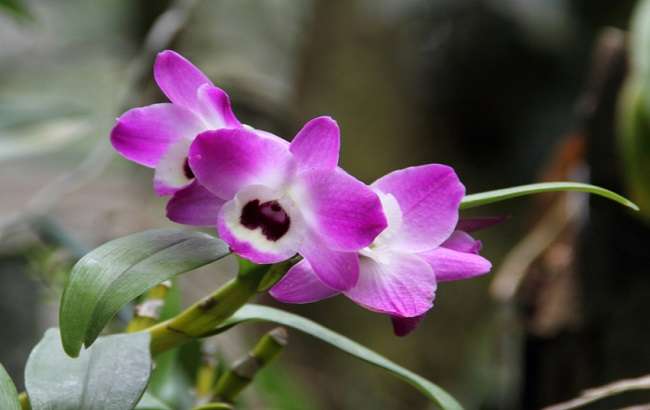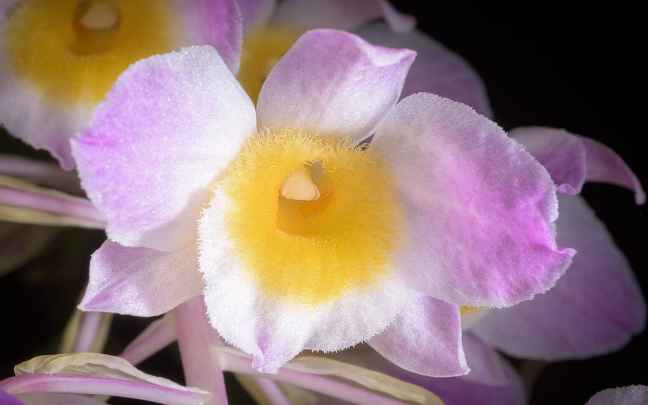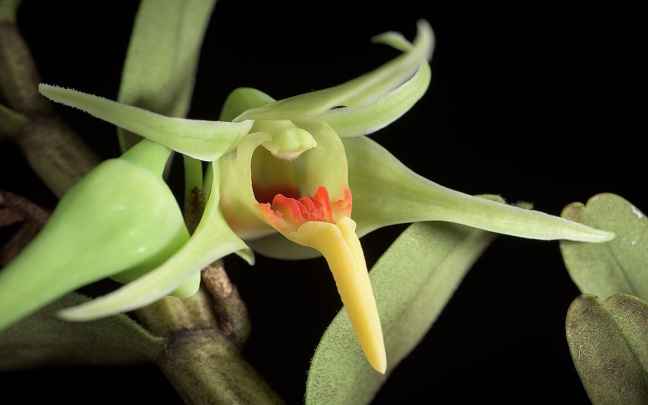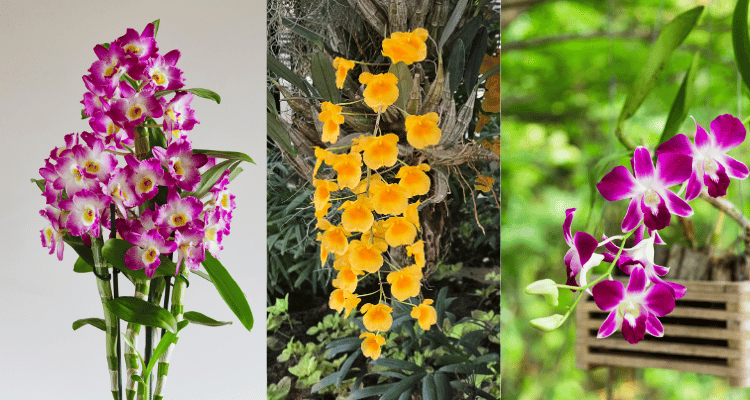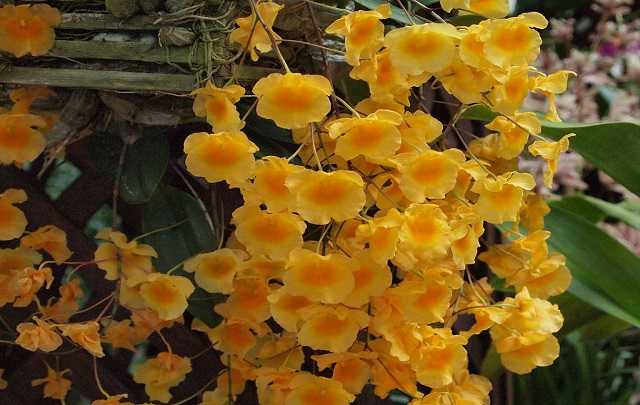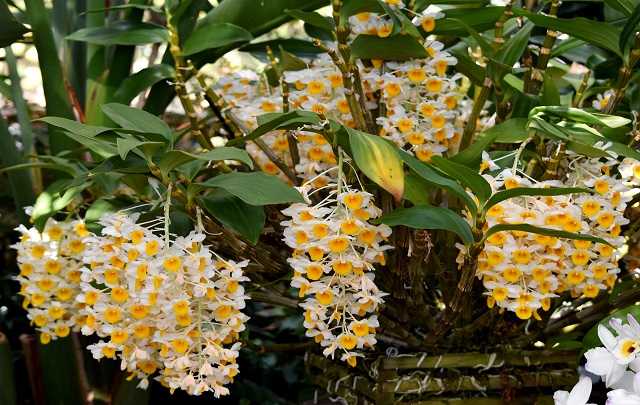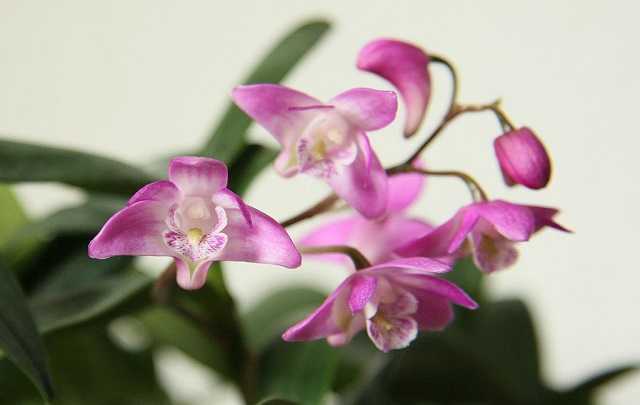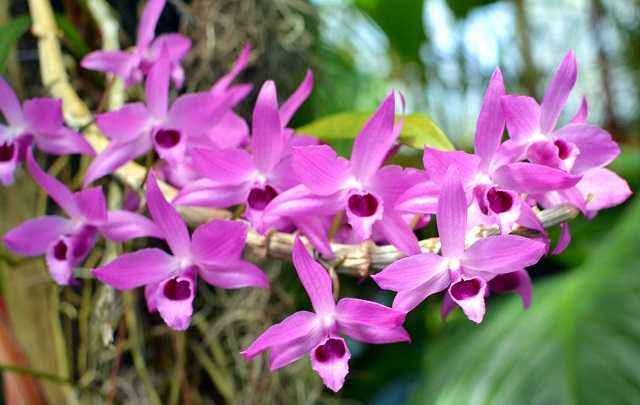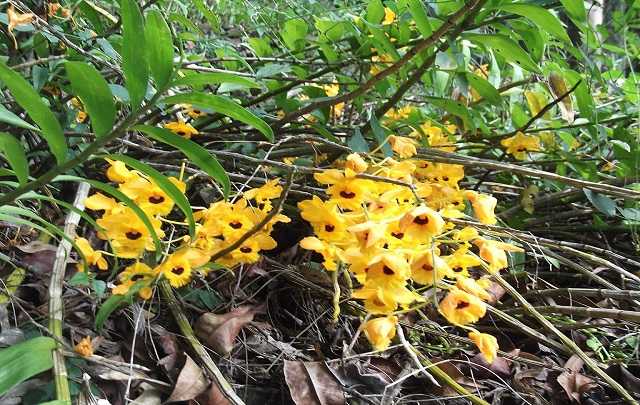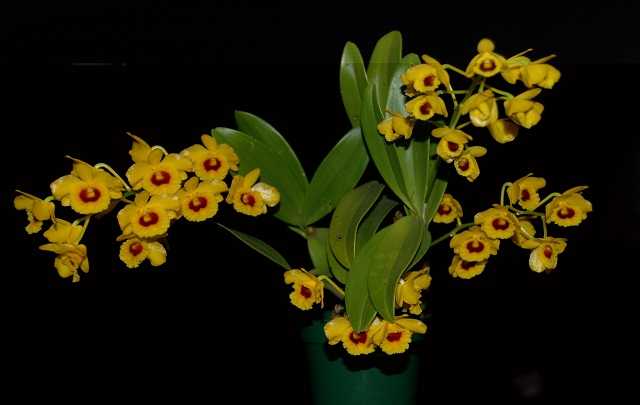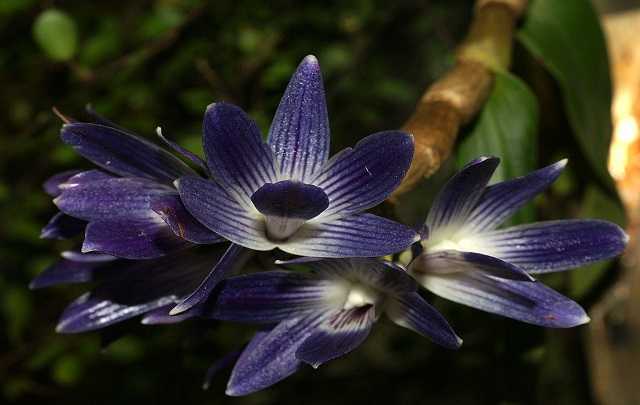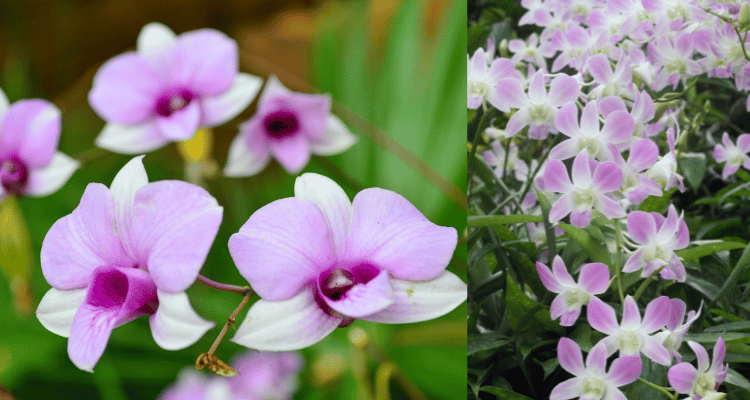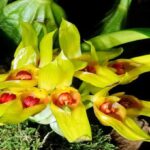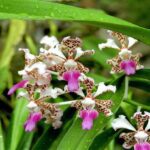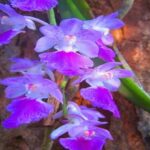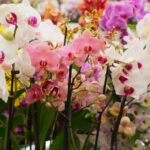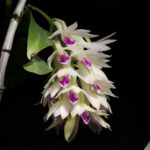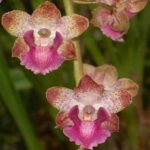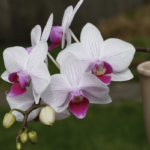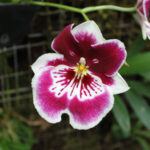Dendrobium orchids are part of a mega-genus of orchids, as there are currently 1510 species accepted in this genus.
However, they are not the largest genus of orchids, losing to bulbophyllum orchids, which have more than 2000 species.
They are native primarily to the following countries:
- India
- Sri Lanka
- Japan
- Philippines
- Indonesia
- New Guinea
- Malaysia
- Australia
- New Zealand.
They thrive in various climates, from the heights of the Himalayas to the Australian desert.
Continue reading to learn about their main species, cultivation techniques, and the key characteristics of dendrobium orchids:
Learn How to Achieve Super Blooms on Your Orchids
🛑 If you love orchids and you're tired of not being able to make them bloom...
Then, know that thousands of beginner growers are achieving beautiful flowers on their orchids by following this method.
Click the button below to have beautiful orchids with show-worthy flowers every year. ⤵
Characteristics
Most dendrobiums are epiphytes, meaning they grow on trees. Thanks to this characteristic, they are named dendrobium, which means “plant that lives on trees”.
Besides being epiphytes, they can also be lithophytes, meaning they grow on rocks.
They are used as:
- Decorative elements in the homes of thousands of people
- Oriental medicine (where Dendrobium nobile is one of the 50 fundamental herbs in Chinese medicine)
The most well-known species is dendrobium nobile, also known as the doll’s eye.
How to Care for Dendrobium Orchids
The fact that there are many dendrobiums in tropical countries is because they have adapted very well to this climate.
Normally, these orchids follow the cycles below:
- Flowering – winter to spring
- Growth – summer to autumn (phase when the new growth or keiki appears)
- Dormancy – late autumn to winter (plant focuses on root growth, leaves stop growing)
So if you want to learn everything about how to care for orchids dendrobium, keep reading.
1 – Temperature
Unlike cymbidium orchids which prefer lower temperatures, a cold climate for dendrobium can be harmful, but not for all species.
Depending on the temperature, their leaves might even start falling.
The ideal temperatures are intermediate:
- During the day, from 20°C to 32°C (68°F to 89,5°F)
- During the night, from 18°C to 24°C (64,5°F to 75°F)
Dendrobium orchids prefer high brightness, as it enables them to produce buds and eventually undergo a new flowering.
A tip is to understand the spots and color changes on your orchid’s leaves.
Basically, if:
- Your orchid has a leaf darker green than usual, it needs more sunlight.
- If the leaf is more yellowish-green, it’s getting too much sunlight.
Lighting is essential for your dendrobium orchid. If it’s lacking or excessive, it won’t bloom.
2 – Humidity
Humidity likely won’t cause any problems for you.
That’s because dendrobiums like humidity:
- 50% to 60% in dry periods
- 70% to 80% in the rainiest period.
Which is the daily average in many cities in the country, but to be sure, do this:
- On several rainy days, bring the dendrobium indoors.
- When the humidity is low, place a pot with gravel and water next to your orchid.
3 – Watering
On average, dendrobiums need to be watered twice a week, but this can vary a lot.
For example, if it’s hanging on a tree, you should water it every day with plenty of water, except on rainy days.
If you have planted your dendrobium in a pot, there’s a trick to check if it’s time to water or not:
- Put your finger 1.5 cm (0.6 inch) below the substrate.
- Check if it’s moist.
- If the answer is positive, check again the next day.
- When you feel it’s dry, then water your dendrobium orchid.
Remember that in colder weather, watering occurs less frequently.
When watering your orchid, avoid wetting the flowers or leaves; water directly on the roots.
4 – Substrates for Dendrobium
Dendrobium orchids also need substrates; the most recommended ones for them are:
- Pieces of charcoal
- Coconut chips
- Pine bark
- Sphagnum moss
Now, you just need to choose one, or better, make a mix with some of these options and place them in your orchids.
5 – Fertilizing Dendrobium Orchids
Dendrobiums are orchids that need fertilizer during almost all their phases, except during flowering.
Basically, during these periods, it’s necessary to use a balanced fertilizer.
During the growth season, feed your plant very well because it can double in size if cared for correctly.
Follow these tips to get good flowering:
- Use a fertilizer that contains more nitrogen or a more balanced fertilizer, such as NPK 20-20-20.
- Fertilization should be done weekly with 1/4 of the strength recommended on the fertilizer packaging.
- At the end of the growth season, you should reduce the fertilizer a bit, but continue with a more balanced fertilizer, using NPK 10-10-10.
To know if your plant is receiving excessive fertilizers, check if:
- There is discoloration or your leaves are burning. This usually starts with the roots and gradually increases until it reaches the leaves.
- Accumulation of salt in the soil. If there is salt in the soil, you are fertilizing excessively.
- Orchid looks weaker. Leaves are darker green, and the plant is weak, but know that this could also be due to lack of light.
Now, when spring arrives, stop fertilizing.
Because it’s time for its new stems to start appearing.
But if within the next 6 weeks, your new stems don’t start to appear, you should help your orchid.
Then encourage flowering; use a fertilizer like NPK 10-30-20.
NOTE: remember to use clean water at least once a month to remove the salts accumulated by fertilizers in your pot.
Do You Want to Learn How To Keep Your Orchids Healthy And Ready to Bloom Every Year?
So, I prepared a complete guide, step by step and illustrated, that will show you:
• The secrets to getting beautiful flowers every year
• How to fight and identify pests and diseases on your orchids
• THE MAGIC SUBSTANCE for orchids and how to use it
• And much, much more.
The great news is that the manual is now available at a super discount!!
But beware, it's only for the first buyers.
Click on MORE INFORMATION below and discover the secrets to show-worthy flowers. 👇
6 – Where to Plant and What Pot to Use
Regarding the location, you should choose the spot for your dendrobium carefully because it doesn’t like to be moved.
When choosing a place for your orchid, make sure it has good lighting, but not all day long.
Also, check if it’s clean and has good ventilation for your plant.
Before repotting, it’s necessary to know where your orchid will be placed.
Dendrobiums can adapt well to 2 locations:
- Pots
- Trees
If you choose to plant it in a pot, follow the instructions below:
Planting or Repotting
The dendrobium orchid prefers to be in tighter pots; this way, their roots can develop better.
If you give them too much space, the roots will become too damp and start to rot.
If you don’t notice any progress in your plant in the first few months after repotting, don’t worry; it might be adapting to the new pot.
They take an average of 3 to 5 months to adjust to a new pot.
Now, if you chose to repot your dendrobium orchid on a tree, read the tips below:
Planting on a Tree
When choosing a tree to place your dendrobium, pick one with an extensive and rough trunk.
This will make it easier for your orchid to attach to the tree.
Also, make sure direct sunlight doesn’t reach the plant.
The tree should have branches and flowers in front to protect it.
7º How to Repot
Normally, dendrobium repotting occurs every 1 or 2 years.
It is done for 3 reasons.
- Needs more space (larger pot)
- Multiplication (keikis)
- Old substrate
To know if your plant needs a new pot, check if it’s growing over the edge of the pot.
Or if the substrate is no longer retaining water or retaining it excessively.
If the answer is yes, it’s time to repot.
Repotting should occur 2 or 3 weeks after flowering.
This way, it won’t interfere with blooming and will be safer for it.
Because changing during blooming can kill your orchid.
The most commonly used methods to reproduce dendrobium orchids are:
- Plant division
- Division of tufts.
Additionally, it can also be repoted using the small shoots that appear on its pseudobulbs.
However, to use these shoots, you must wait for them to develop roots.
Otherwise, they won’t grow properly in the new pot.
To learn how to reproduce and/or repot your dendrobium orchid, watch the videos below:
8º How to Prune
Now that your plant has already bloomed, you need to take some care for it to bloom beautifully again next year.
So when the flowers wither or turn yellow, cut the spike, but keep the stem.
The flower spike starts at the tip of the stem, immediately above the top set of leaves. Wikihow
Also, check out the article rare orchids to learn more about orchids.
Some Types of Dendrobium
Among the over 1500 dendrobium species, here are the main ones.
- Dendrobium nobile (doll’s eyes orchid)
- Dendrobium anosmum
- Denphal
- Dendrobium moniliforme
- Dendrobium agregatum
- Dendrobium lindleyi
- Dendrobium thyrsiflorum
- Dendrobium bigibbum
- Dendrobium kingianum
- Dendrobium densiflorum
- Dendrobium moschatum
Now, you will learn a little more about each of these species:
Dendrobium kingianum
Dendrobium kingianum is a plant mainly native to eastern Australia.
It is usually rupicolous and produces flowers between winter and spring.
This is one of the most well-known dendrobiums among cultivators.
As for its flowers, they range from 7 to 15 centimeters (2.75 to 5.90 inch) and appear in an average of 2 to 15 flowers per bloom.
Dendrobium nobile
Dendrobium nobile is possibly the most famous species, popularly known as doll’s eyes.
It is an epiphytic plant with short and flexible leaves.
They are usually found in forests at medium altitudes of 200 meters (656.168 ft), especially in Asian countries.
The major difference between this orchid and others is that it has very large, beautiful flowers and, in some cases, fragrant ones.
Dendrobium anosmum
The dendrobium anosmum is an epiphytic orchid native to Asian countries such as:
- Laos
- Philippines
- Indonesia
- Among others.
An interesting fact about this plant is that it has a very pleasant fragrance.
Moreover, if you leave it in indirect sunlight for a long time and then in total darkness, this smell will become much stronger.
Usually, its flowers are pink and appear between spring and summer.
Another curiosity is that there is a type of this species with white flowers, the dendrobium anosmum alba.
Dendrobium fimbriatum
Dendrobium fimbriatum also lives on trees and can reach up to 1.5 meters (59 inch).
The name “fimbriatum” means fringed, a nickname this orchid earned due to its labellum.
This orchid thrives in high temperatures, with its natural habitat being higher forests ranging from 700 to 2500 meters (8202 ft) above sea level.
Its flowers are yellowish and appear in clusters of 10 to 15.
Dendrobium chrysotoxum
The Dendrobium chrysotoxum is native to:
- China
- India
- Thailand
- Among other Asian countries.
It typically thrives in slightly higher temperatures. Its flowering usually occurs in late winter, with an average of 20 yellow flowers.
To care for them, you’ll need to provide plenty of water, lighting, and fertilize with NPK 20-20-20 once a week during its growth.
Dendrobium victoriae-reginae
This is the blue dendrobium.
A natural orchid from the Philippines, famous for its flowers that are very close to blue in color.
It was discovered in 1897 and is an epiphytic orchid.
To cultivate it, you have to provide good humidity and plenty of shade for this orchid.
Advanced Techniques
From now on, you will learn some more advanced techniques for taking care of Dendrobium orchids.
With these techniques, you will be able to:
- Enhance the blooming of your orchid
- Generate seedlings more easily
- Make your orchid bloom more than once a year
So, keep reading to learn these techniques that most professionals know.
Generating Seedlings
To do this, we will take advantage of a factor that often hampers flowering.
This factor is the lack of lighting.
If you prefer to reproduce your plant instead of having it produce several flowers this year,
Put it in a shadier place, but be careful not to overdo it.
That way, your chances of producing a dendrobium seedling will be much higher.
This technique also works with phalaenopsis orchids.
Forcing Blooming
Now, if you want a beautiful blooming, follow the lighting tips that have already been taught above.
Dendrobium flowers last for about 30 days, and this varies depending on the:
- Species
- Region
- Temperature
Some dendrobium species can produce up to 100 flowers.
Something very curious is the wide range of colors that this orchid’s flower can come in.
Some examples are:
- Yellow, red, blue,
- Violet, white, lavender,
- Green, orange, and pink.
Conclusion – Dendrobium Orchids
I hope that with all these tips, you can easily take care of your dendrobium orchids.
Orchid cultivation is not very difficult.
You just need to know some factors that will help your plant evolve and be healthy.
Now it’s your turn to help the site, share this article with your friends by clicking on the icons below.

